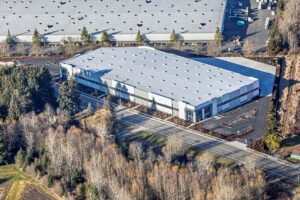BLOOMINGTON, Ind. — March U.S. trailer net orders once again defied seasonal and market expectations, increasing 3% month-over-month (m/m) and 70% year-over-year (y/y), totaling 21,516 units, according to FTR.
“Some fleets appear to be prioritizing adding trailers in lieu of power units,” said Dan Moyer, senior analyst, commercial vehicles. So far this year, U.S. trailer net orders have outpaced total North America Class 8 net orders by 7,900 units. Given the increasing level of uncertainty – the economy, tariffs, truck freight demand and pricing, etc. – it remains to be seen if this order strength can be sustained.
March 2025 represented the fifth consecutive month with net orders exceeding 20,000 units and positive y/y growth. However, a weak start to the 2025 order season (September 2024 through March 2025) kept cumulative net orders at 146,253 units – down 8% y/y and averaging 20,893 units per month.
Total trailer build in March increased 11% m/m – in line with seasonal expectations – to 17,611 units but decreased 26% y/y. 2025 year-to-date trailer build fell 31% y/y to 46,218 units, an average of 15,406 per month. With total trailer net orders above production, backlogs increased by 4,564 units (+4% m/m; -16% y/y) to 127,892 units for a fifth consecutive monthly increase. However, the larger m/m increase in production compared to backlogs lowered the backlog/build ratio to 7.3 months.
Tariff Woes
“Recently imposed U.S. tariffs, along with retaliatory measures, pose significant risks to the North American trailer market, influencing both imported units and domestic production reliant on foreign-sourced materials ” Moyer said. “OEMs will likely face increased manufacturing costs, diminished margins, and possibly softened or stagnant demand. Suppliers, meanwhile, likely will experience intensified financial pressures stemming from supply chain disruptions, potentially prompting shifts toward alternative sourcing strategies or domestic partnerships. For fleets, higher prices and prolonged lead times may result in postponed procurement decisions or a renewed focus on upgrading power units instead.”












